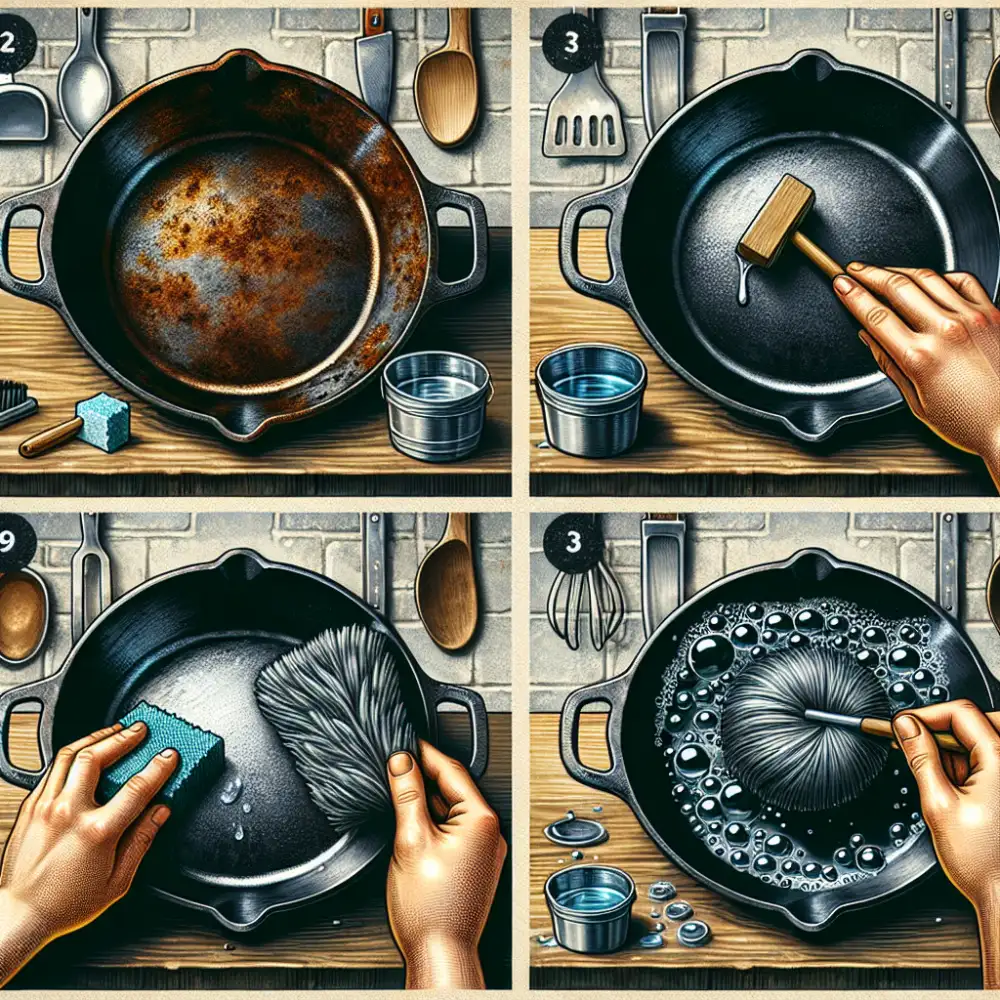Banish Rust From Your Cast Iron Skillet With These Tips

Assess the Rust Damage
Carefully examine the extent of the rust. Is it just surface rust, or has it eaten deep into the metal? Surface rust appears as discoloration and can often be treated. Deep rust, however, might require professional intervention or even part replacement. Consider the location of the rust. Rust on structural components like frames or suspension parts is a more serious issue than rust on a fender. Evaluate if you have the skills and tools to address the rust. If you're dealing with extensive rust or rust in critical areas, it's best to consult a professional.
Gather Cleaning Supplies
Before you begin your cleaning spree, it's essential to have all the necessary tools and products at your disposal. This will prevent unnecessary interruptions and make the process more efficient. Gather the following cleaning supplies: an all-purpose cleaner, glass cleaner, disinfectant wipes, microfiber cloths, a scrub brush, a mop, a bucket, a vacuum cleaner with attachments, trash bags, and rubber gloves. You may need specialized cleaners for certain tasks, such as oven cleaner or stainless steel polish.
Scrub with Steel Wool
Steel wool can be your best friend when dealing with stubborn, baked-on food. Choose a grade appropriate for your cookware – finer grades for delicate surfaces and coarser grades for tougher jobs. Wet the steel wool slightly with soapy water and gently scrub the affected area. Remember, a little goes a long way, and too much pressure can damage your cookware. Rinse and dry thoroughly after use to prevent rusting. However, avoid using steel wool on non-stick surfaces, as it can scratch and ruin the coating.
Rinse and Dry Thoroughly
Once you’ve given your dishes a good scrub, it’s time to rinse away all that soapy goodness. Use clean, hot running water to ensure every last bit of food and soap is gone. Leftover soap can not only affect the taste of your food but also leave a filmy residue. After rinsing, don’t forget the all-important drying step! Air drying is best to prevent the growth of bacteria, but if you’re short on time, a clean towel will do. Remember, damp dishes are a breeding ground for germs, so make sure your dishes are completely dry before storing them away.
| Method | Effectiveness | Cost | Time Required |
|---|---|---|---|
| Scrubbing with Steel Wool and Soap | High | Low | 10-20 minutes |
| Soaking in Vinegar Solution | Medium | Low | 2-8 hours |
| Electrolysis (using a battery charger) | High | Medium | 6-24 hours |
Apply Thin Oil Coating
Applying a thin coat of oil to your tools helps prevent rust and corrosion, keeping them in top shape for longer. Use a lightweight, rust-inhibiting oil like WD-40 or linseed oil. Avoid heavier motor oils, as they can attract dust and grime. Simply apply a small amount of oil to a clean cloth and wipe it over the surface of your tools.

Make sure to coat all metal parts, including blades, handles, and joints. Once coated, wipe away any excess oil with a clean portion of the cloth. This process is especially important after cleaning your tools or if they'll be stored for an extended period.
Heat Pan to Season
Heating a pan before you start cooking is crucial, especially when seasoning. A hot pan allows the oil to thin and spread evenly, ensuring a durable, stick-resistant coating. If the pan isn't hot enough, the oil can pool or distribute unevenly, leading to a sticky surface and uneven cooking. To heat your pan properly, place it on medium heat for several minutes. You'll know it's ready when a drop of water sizzles and evaporates almost immediately upon contact.
Cool and Store Properly
Once your food is cooked to a safe internal temperature, you want to make sure it doesn’t hang out in the danger zone (between 40°F and 140°F) for too long. Bacteria can multiply rapidly at these temperatures, increasing the risk of foodborne illness. Refrigerate perishable foods within two hours of cooking (or one hour if the ambient temperature is above 90°F). Store leftovers in shallow containers to promote rapid cooling. Remember, large cuts of meat, like a whole turkey or roast, need to be divided into smaller portions before refrigeration to ensure proper cooling. Don’t forget about your fridge’s temperature! Keep it at or below 40°F to slow down bacterial growth.
Published: 13. 06. 2024
Category: Food



